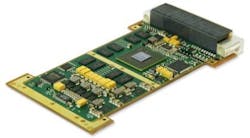AAI chooses visual computer from Quantum3D to run applications on infrared weapon threat simulator
The trainer stimulates missile warning systems, mimics the ultraviolet effects of surface-to-air missiles, and helps generate after-action video for education and analysis. MAST can stimulate the AAR-47, AAR-54, AAR-57 and AAR-60 missile warning systems on Army, Navy, and Air Force aircraft.
The MAST man-portable aircraft survivability trainer uses commercial off-the-shelf (COTS components such as the Thermite TVC 2.0 TL visual computer, which runs the MAST application software to simulate a missile and capture videos for after-action review. The small computer combines visualization capabilities embedded computing, 2D/3D graphics, extended-temperature conduction cooling, and open-systems software support.
For more information contact Quantum3D online at www.quantum3d.com, or AAI Test & Training at www.aaicorp.com.
